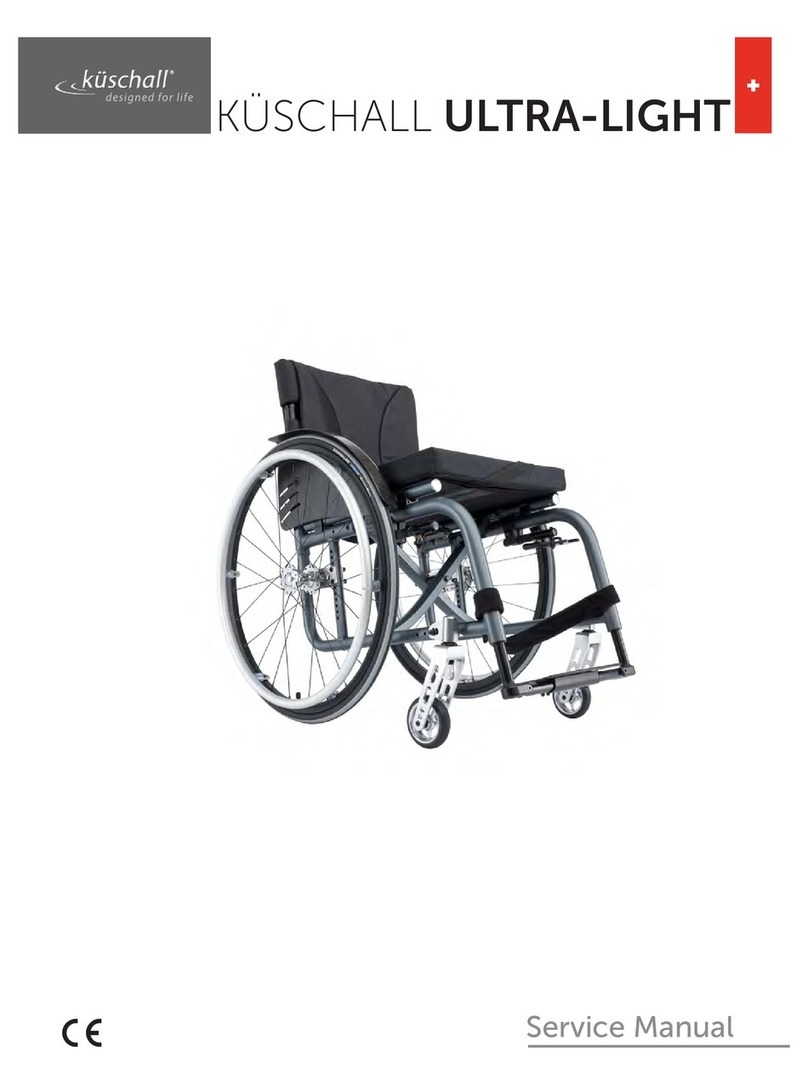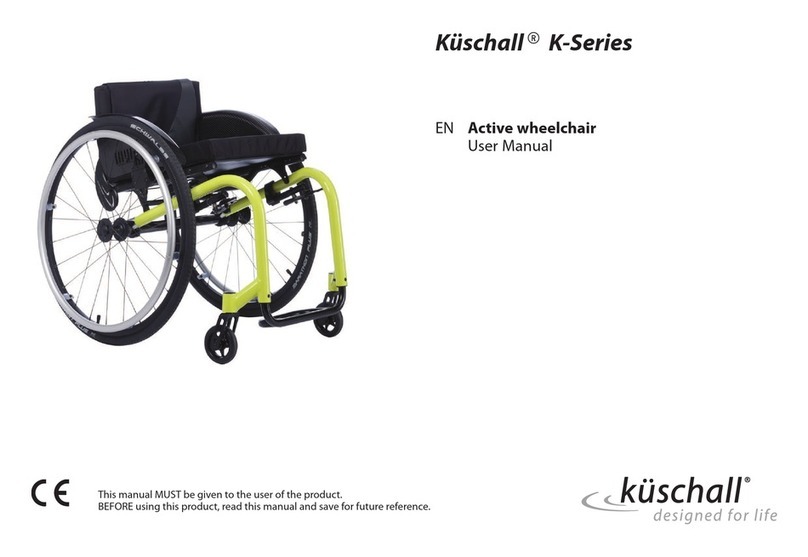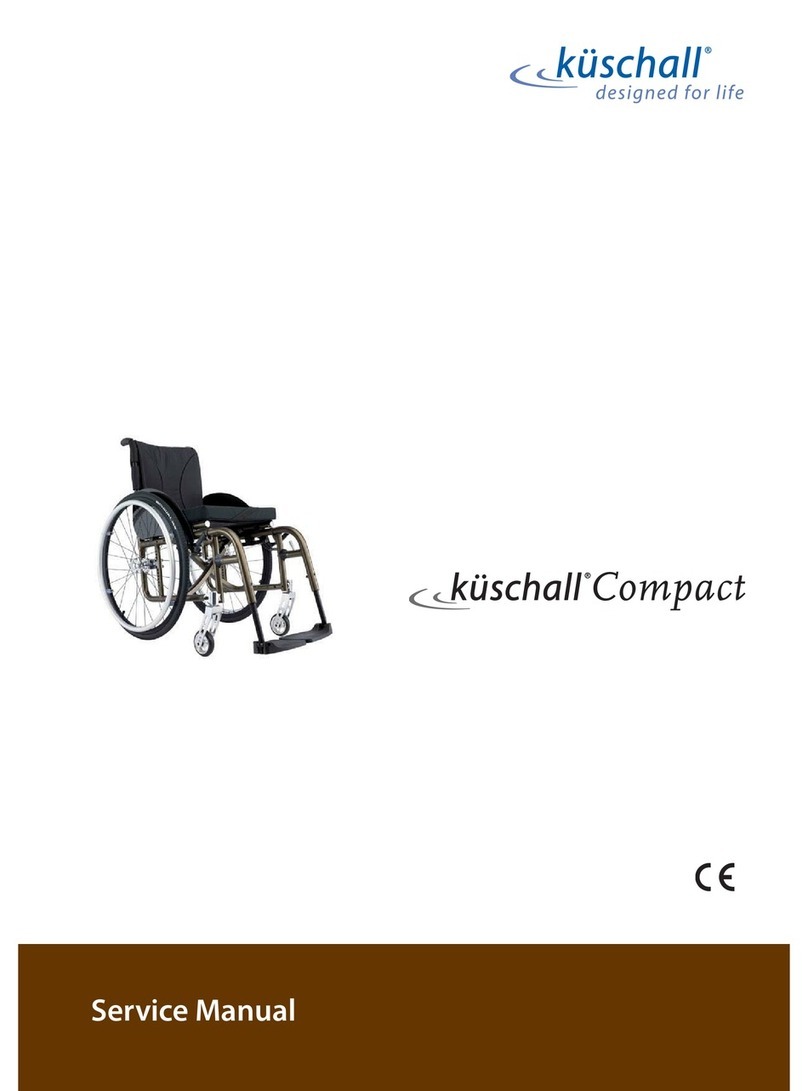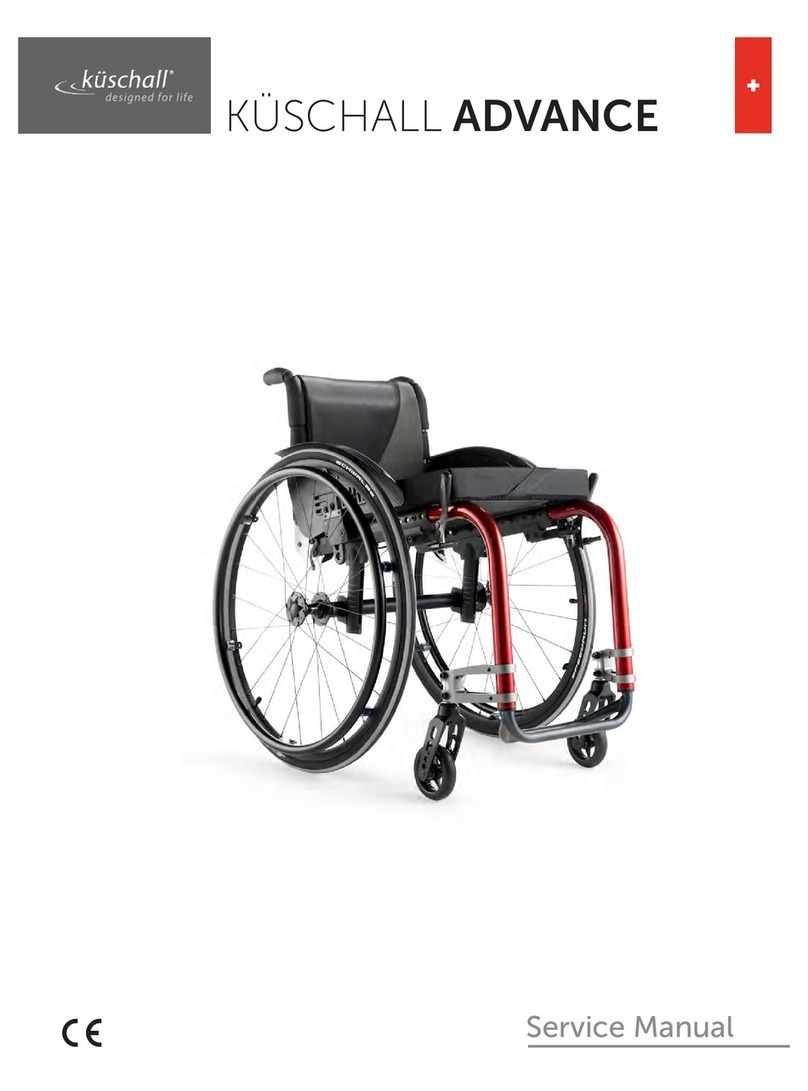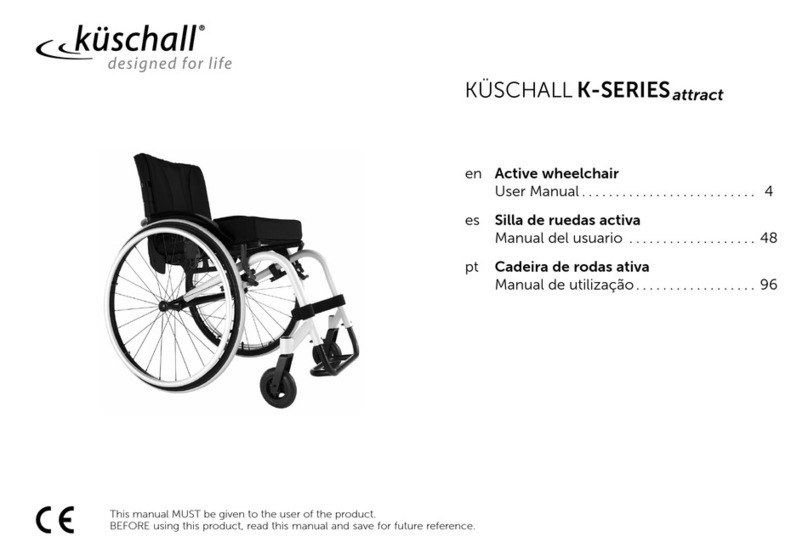3© Küschall AG, Switzerland | 2015-05
Service Manual
TABLE OF CONTENTS
GENERAL...................................................................................................................... 4
Introduction 4
Spare parts 4
Fastening with hexagon socket bolts 4
Torque 5
Checks 5
Identifying and repairing faults 5
FRAME............................................................................................................................6
Adjusting the frame 6
Changing the frame 6
SEAT ...............................................................................................................................7
Adjusting the seat height 7
Replacing the seat cover 7
BACKREST.................................................................................................................... 8
Adjusting the backrest height 8
Backrest angle 8
Tipping point of the wheelchair 8
Replacing the Standard Light backrest cover 9
Replacing Velcro®tapes for adjustable backrests 9
Replacing push handles with Light cover 10
From serial number 13G08000785: Replacing push handles with Light cover10
Replacing push handles with adjustable backrest 10
Replacing foldable push handles 11
Foldable backrest, angle adjustable (optional) 12
FOOTRESTS ................................................................................................................13
Replacing the footrest 13
Adjusting the height of the footrest 13
Adjusting the angle of the footrest 13
SIDES............................................................................................................................14
Fitting the clothes guard 14
Fitting the mudguard 14
FRONT WHEELS.........................................................................................................15
Replacing the front wheel fork 15
Replacing the front wheel 15
Cleaning the front wheel bearings 15
REAR WHEELS ............................................................................................................16
Checking the tyre pressure 16
Checking the spoke tension 16
Checking that removable axles are seated correctly 16
Adjusting the removable axles 16
Replacing the rear wheels 17
Replacing the axle 17
Ensuring the rear wheels are parallel 17
Repairing or changing an inner tube 17
Fitting tubed tyres to carbon wheels 18
BRAKES ........................................................................................................................19
Fitting / adjusting the parking brake 19
OPTIONS & ACCESSORIES...................................................................................... 20
Fitting an antitipper 20

